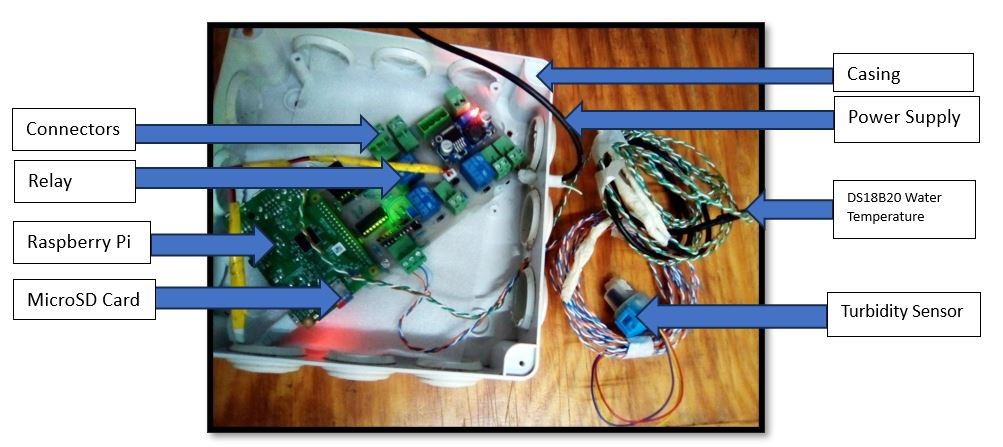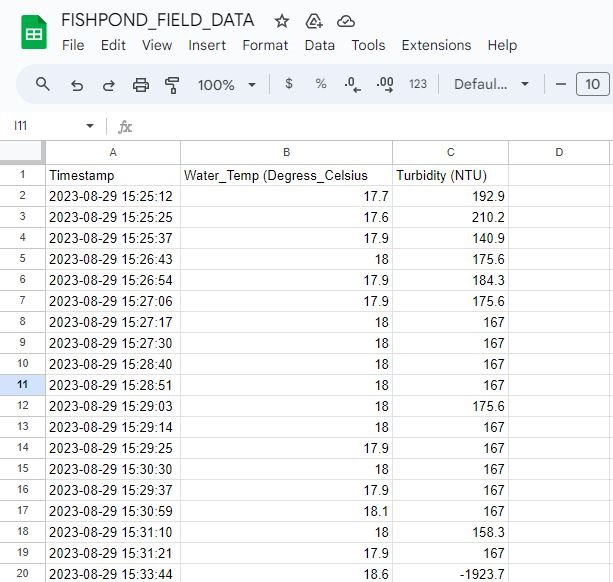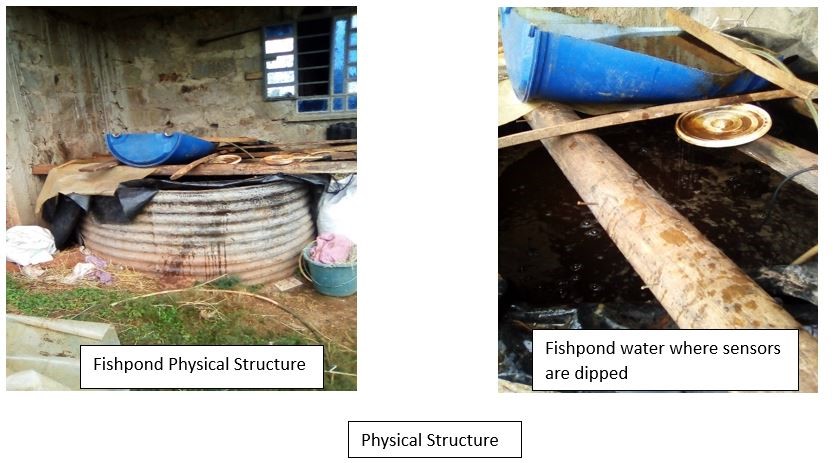Introduction
Fish farming, also known as aquaculture, plays an important role in supplying a steady and nutritious source of protein to populations all over the world. However, in the face of technological advancements, the use of conventional methods of rearing fish hampers the possibility for increasing production and profitability. In the 21st century, technology has revolutionized many industries and agriculture is no exception. Modern technological solutions are now being used in fish farming to address farmer’s issues and contribute to overall food security goals. One such solution is the Fishpond Water Quality Monitoring System developed by the Center.
Technology employed
The Fishpond Water Quality Monitoring System employs Internet of Things (IoT) technology to provide fish farmers with real-time and precise insights into the water quality conditions of their fishponds. This technology addresses a critical part of aquaculture success, i.e., maintaining appropriate water quality for fish survival. The system facilitates farmers in conducting water quality assessments by monitoring parameters such as turbidity and water temperature. This proactive monitoring ensures the optimization of conditions conducive for robust fish growth and productivity.
The system architecture is shown below:

System Architecture: Physical design
The system includes two sensors that include a turbidity sensor (Analog Turbidity Sensor) for measuring the concentration of total suspended solids and a water temperature sensor (DS18B20) for measuring water temperature. The turbidity sensor, which uses analog technology, measures the concentration of suspended solids in the water and provides precise turbidity levels. This vital information aids in determining water clarity, which is a critical factor in creating an ideal environment for fish cultivation. On the other hand, the DS18B20 digital thermometer provides 9-bit to 12-bit Celsius temperature measurements and has an alarm function with nonvolatile user-programmable upper and lower trigger points. This data is critical for characterizing thermal conditions in the fishpond, which influence metabolic activity and the overall health of aquatic organisms. Both sensors work synergistically to comprehensively monitor and assess the aquatic environment, providing farmers with valuable insights into turbidity levels and water temperature. This data-driven approach ensures proactive management of the fishpond, optimizing conditions for healthy fish growth and productivity.
Data collection
When data is collected from the sensor nodes, it is wirelessly transmitted to a centralized Google Sheet using the configuration made possible by the Google Drive and Google Sheet APIs. The farmer is able to access the data on the google sheet remotely. In tandem, a redundant local storage mechanism is employed, with the data being saved directly on the Raspberry Pi. This dual-tiered storage approach not only ensures the integrity and security of the acquired data but also provides a failsafe in case of network issues or disruptions.

Snips of data collected
The combination of wireless transmission to the central Google Sheet and local storage on the Raspberry Pi contributes to a comprehensive data management strategy. This setup not only supports real-time monitoring but also enhances the system's resilience and accessibility, allowing users to monitor and analyze the acquired data seamlessly from any location with an internet connection.
- Precision farming allows farmers to make informed decisions based on real-time data, lowering the danger of poor water quality affecting fish health.
- Proactive interventions can prevent problems from escalating, resulting in more efficient resource utilization and improved overall production outcomes.
- Increased profit margins: Increased profitability for fish producers results from improved production quality and lower losses.
- Water quality monitoring and management contribute to sustainable aquaculture activities by reducing environmental impact and resource wastage.
Deployment
The device was deployed to aid in collecting real-time data on the defined water parameters, which include turbidity and water temperature. Positioned in the fishpond, it offers the farmer immediate insights, enabling timely decisions to optimize water conditions for fish growth. This proactive monitoring allows for swift adaptation of management strategies such as temperature adjustment, representing a transformative shift in aquaculture practices and enhancing sustainability and productivity.

Device deployment

Dsail PondLive Device
Future Work
Oxygen is an essential parameter in water, just as it is for human beings, that enables fish to survive in water. A fishpond has a maximum capacity of fish that can be stocked, depending on the dissolved oxygen available in the water. There is therefore a need to be aware of the amount of dissolved oxygen in water at a defined time. As these can be determined, the essential sensors used cost a pretty penny, which is unfeasible for not only a large-scale fish farmer but also a large quadrant of small-scale fish farmers. Recognizing this gap, CDSAIL intends to produce an affordable locally made dissolved oxygen sensor. This innovation holds the promise of empowering fish farmers, both large-scale and small-scale, with the ability to closely monitor oxygen levels in water. In doing so, farmers can make informed decisions on stocking fish in their ponds, aligning with the pond's capacity and ensuring a sustainable and thriving fish farming venture.
Conclusion
As the global agricultural landscape advances, technology-driven solutions such as the developed Fishpond Water Quality Monitoring System plays an important part in changing traditional fish rearing practices into contemporary, efficient, and sustainable methods. Embracing such advances, fish farmers will considerably contribute to global food security initiatives while also improving their personal economic well-being.



